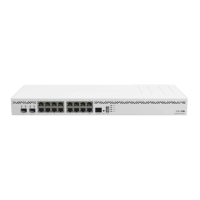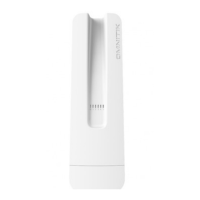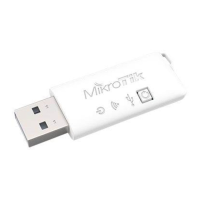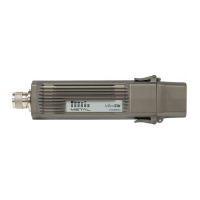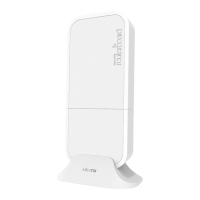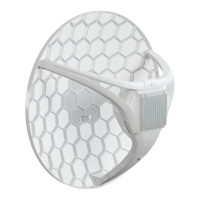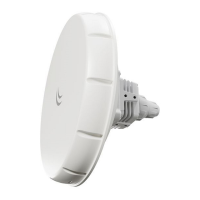6. If needed, install cable management brackets.
The device has no protection from water contamination, please ensure the placement of the device in a dry and ventilated environment.
We recommend Cat6 cables for our devices.
The mounting and configuration of this device should be done by a qualified person.
Extension slots and ports
48 of Gigabit Ethernet ports.
Four 10G SFP+ ports.
Two 40G QSFP+ ports.
1x RJ45 console port (set at 115200bits/s, 8 data bits, 1 stop bit no parity).
1x 10/100Mbit Ethernet port for management access.
Three cooling fans with automatic speed control.
Two integrated power supply units with AC inputs for redundancy.
Please visit wiki pages for MikroTik SFP module compatibility and configuration table: https://wiki.mikrotik.com/wiki
/MikroTik_SFP_module_compatibility_table
Powering
The device accepts powering from two inputs of 100 – 240 V AC .
The power consumption of this device under maximum load is up to 50 W. With attachments 60 W.
Reset button
The RouterBOOT reset button has the following functions. Press the button and apply the power, then:
Release the button when the green LED starts flashing, to reset the RouterOS configuration to defaults.
Release the button when the LED turns solid green to clear all configuration and defaults.
Release the button after LED is no longer lit (~20 seconds) to cause a device to look for Netinstall servers (required for reinstalling RouterOS over
the network).
Regardless of the above option used, the system will load the backup RouterBOOT loader if the button is pressed before power is applied to the device.
Useful for RouterBOOT debugging and recovery.
Netinstall needs to be performed through the MGMT port on this device.
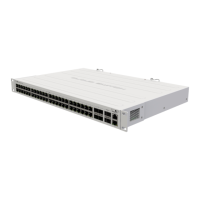
